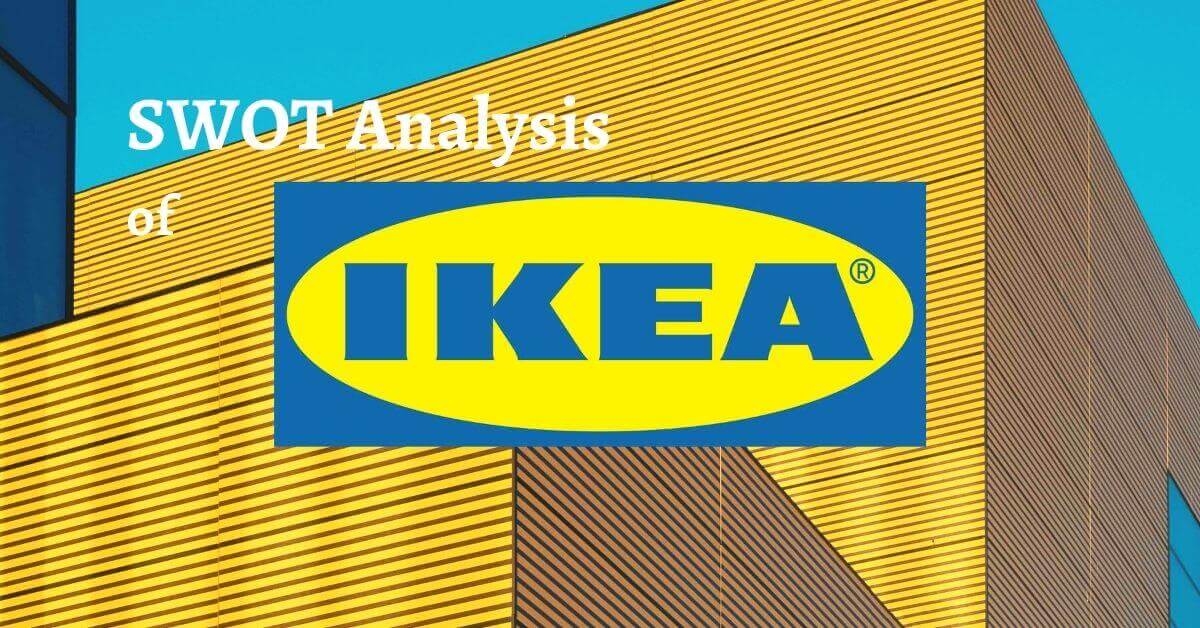Swot analysis of PepsiCo. PepsiCo is a US carbonated soft drink and food items producing company. Caleb Bradham developed the drink and laid the foundation of the company in 1893 under the name of “Brad’s Drink”. It became “Pepsi-Cola” in 1898 and became shortened to “Pepsi” in 1961.
The headquarter of the company is in Harrison, New York, USA. Ramon Laguarta is the current CEO of PepsiCo. Inc. There are approximately 267000 people working for the company across the world.
Some of the main products of Pepsi;
- Pepsi,
- Walkers
- Potato Crisps,
- Mountain Dew,
- Frito Corn Chips,
- Lay’s Potato Chips,
- Mist Twist,
- Gatorade,
- Tostitos
- Tortilla Chips,
- Tropicana Beverages,
- Aquafina bottled water,
- 7 Up,
- Ruffles
- Potato Chips,
- Doritos tortilla chips,
- Mirinda,
- Cheetos,
- Quaker foods and snacks
According to an estimate by MacoTrends, the annual revenue of Pepsi in 2022 was 86.392 billion US dollars. It has increased by approximately 8.7% in 2022. Out of which the net income of the company after excluding all the expenses was 8.910 billion US dollars. Net profitability has decreased by 16.96%.
Some of the top competitors of Pepsi;
- General Mills,
- Coca-Cola,
- Monster Beverage,
- Red-Bull,
- Link Snacks,
- Kellogg,
- Unilever,
- Conagra Brands,
- Nestle,
- Campbell Soup Company,
- Kraft Foods
Today, we’ll study the swot analysis of PepsiCo. How internal factors like strengths/weaknesses and external opportunities/threats are impacting the company. If you want to learn about the external factors, check out the pestle analysis of Pepsi. Here’s the swot analysis of Pepsi as follows;
Strengths of PepsiCo
Diversified Business Strategy
Pepsi has maintained a very good balance between the sales of food and beverages. For instance, Tropicana, Pepsi, and Gatorade are some of the drinks in the beverage category. Kurkure, Doritos, Cheetos, and Frito Lays are the main items in the food and snacks category.
According to an estimate, approximately 46% of Pepsi’s revenue comes from drinks and beverages. The remaining 54% of the company’s revenue is from food and snacks. It shows that the company has diversified its business equally both in the food and beverage category. The brand isn’t relying on one category.
Successful Global Brand
According to the ranking of Forbes, Pepsi is at the 36th position in 2020 with a brand worth of 9.3 billion dollars. The company was in the 29th position in 2019 with a brand value of 18.8 billion dollars.
Worldwide Presence
According to an estimate, Pepsi is delivering its food and drinks to more than 200 countries across the world. Such a worldwide presence proves the fact that the brand has strong brand recognition among customers. Global brand awareness helps the company to stand tall in the market along with its main competitor, Coca-Cola.
Diverse Portfolio
Pepsi offers dozens of foods, snacks, and drinks in each of the food and beverage categories. According to an estimate, there are roundabout more than 22 brands running under the umbrella of Pepsi. Like Frito, Pepsi Max, Diet Pepsi, Pepsi, and many more. All of them contribute billions of dollars to the company’s revenue.
Young Iconic Brand
Pepsi has established a reputation for being an iconic young brand. It’s because the company has always targeted the young audience in its marketing campaigns. The advertisements of Pepsi comprise an element of fun, youth, and sport. It gives the impression of energy, enthusiasm, and refreshment about the brand. Many hotels and restaurants serve Pepsi on their menu, and people take packs of soft drinks while camping and touring.
Marketing Strategy
Pepsi is very well aware of the significance of its marketing strategy. That’s why the brand has been sponsoring the halftime show event of the Super Bowl for the past 7 years. Pepsi reached an audience of a record-high 100 million people in 2019 because of its consistent marketing strategy.
Dominating the Market
According to the statistics by Information Resources, 22% of the US preferred Pepsi as a refreshment beverage in 2019, and 20% of the people chose Coca-Cola. It shows the market dominance of Pepsi and only the dominating victor can dictate the market terms and conditions.
The brand uses its market dominance position and establishes a strong relationship with retailers so that it could get a better and more accessible position on the shelves.
Delivery Directly to Stores
The supply chain and distribution system of Pepsi follows the direct-store-delivery (DSD) method. It makes sure that the distributors deliver the products like food, drinks, and snacks directly to the retailers. DSD is a very good strategy for restocking the shelves and promoting your product/service.
Sports Marketing & Sponsorship
Pepsi has made partnerships with many sports clubs and sporting events organizations. Such alliances help the brands to directly target the customers at the sporting event. For instance, Pepsi has recently signed a contract of 7 years partnership with Tampa Bay Lightning and AMALIE Arena.
Supply Chain Management System
Pepsi is a multinational brand and the company is operating its business in different countries globally. The brand uses an efficient supply chain management system to produce and deliver products cost-efficiently. The company uses cheap raw materials locally available in different countries.
For instance, coconut water requires refrigeration to keep the ingredient fresh on the shelves of the retail shop. Raw coconut is from the Philippines and Indonesia, the packaging material is from the Middle East, Asia, and Europe, and distribution occurs at the port of New York and California.
Loyal Database of Customers
The young database of customers is loyal to the iconic brand, Pepsi, for its unique taste and young impression. The company keeps launching different schemes to maintain customers’ loyalty. Pepcoin is a cash-back program of Pepsi that the company has introduced recently. It allowed people to receive a cash prize for combining their food and drink.
Corporate Social Responsibility
Pepsi has a history of working with many local and international organizations for addressing sustainable environmental issues. For instance, Pepsi has recently joined hands with IDB (Inter-American Development Bank) for a sanitation and clean water program in Latin America.
Strong Leader Ship
Under the leadership of Ramon Laguarta, CEO of Pepsi, the company is performing very well, especially in a time of economic crisis due to the pandemic crisis.
Weaknesses of PepsiCo
Controversial Ads
Companies and businesses should play a positive role in uplifting positive common social values. The advertisement of Pepsi criticized the “Black Live Movement” in 2017 which Kendall Jenner was featured in it. The company put it down in a day and realized its mistake. It was a major weakness in a market where Coca-Cola was promoting the family get-together values. PepsiCo issued a statement later and it said;
“Pepsi was trying to project a global message of unity, peace, and understanding. Clearly, we missed the mark, and we apologize. We did not intend to make light of any serious issue. We are removing the content and halting any further rollout. We also apologize for putting Kendal Jenner in this position.”
Unhealthy Products Perception
The deception of perception is stronger than reality. The customer market is becoming health-conscious nowadays. The soft drinks Pepsi comprise a high level of sugar and the food items and snacks contain enough salt. The company also uses chemically treated flavors.
Failed Products
Despite being a multinational brand, some of its products of PepsiCo also failed in the market. Like Pepsi Blue, Crystal Pepsi (Colorless Cola drink), and others. Their marketing campaigns portrayed employees as incompetent and demoralized publically. Such a negative influence helped competitors grow more.
Reliance on Food & Beverage
They say that don’t put all of your eggs in one basket and Pepsi is doing the opposite. The company is heavily relying on the food and beverage industry. Even the whole revenue stream of the brand comes from both of these sources. It’s highly risky for the company’s business. Therefore, Pepsi should diversify its revenue stream.
Opportunities available to PepsiCo
R & D
Accepting and adopting the latest technology has become a necessity for the survival of every business. Pepsi has got capital and resource to boost the research and development process at its production and manufacturing facilities. It would give the company a competitive edge in the market and customers would have a better experience.
Partnerships & Alliances
Partnerships and alliances are very important for any global multinational brand like Pepsi. It helps the company to increase customers’ market influence. For instance, Pepsi has made a partnership with Starbucks to serve cold drinks at its coffeehouse outlets. Such an alliance is good for both of these brands.
E-commerce
The recent pandemic crisis has increased the trend of online shopping and e-commerce. Pepsi should also take advantage of the current trend of e-commerce and launch its online retail platform. People could order the drink online at the nearest store.
Diversified Products
As we know that there are approximately 22 brands that are running under the portfolio of Pepsi. However, the diversification of the portfolio would require the company to expand its product category of food and beverages. It could mean the acquisition and purchasing of any small sportswear brand or any other. That’s how that brand can increase its product portfolio.
Unique Flavor
The way market trends, demographics, and customers’ preferences are changing. Pepsi should also introduce a new flavor of its food snacks and beverages. It would help the brand to attract new customers and retain the old ones.
Healthy Products
According to an estimate, 44% of the products of PepsiCo have got more than 100% calories. It’s much higher than the current health standards. Therefore, the brand should offer low calories products tailoring the needs of health-conscious customers. The company should also consider offering fruit and milk-based shakes to cater to the needs of the market.
Targeting Health-Conscious Customers
Pepsi has recently started decreasing the sugar, salt, fat level in its products. The company plans to reduce sugar from 100% to 12 ounces, 1.3% salt, and 1.1 fats in its products by the end of 2025.
Developing Markets
The economic condition and other market conditions are growing in South America, Africa, and Asia. PepsiCo should take it as an opportunity and expand the market and customer base in those countries.
Soda-Drinks
PepsiCo has recently acquired a 3.2 billion dollar seltzer maker SodaStream. It has allowed the company to launch Bubly (A sparkling water brand). It’s also a very good step towards market expansion and healthier diet products.
Energy Drinks
PepsiCo agreed to purchase the Rockstar Energy drink brand at 3.85 billion dollars in March 2020. The plan was to compete with the Monster Beverage brand in the energy drink market.
Corporate Social Responsibility
PepsiCo is a socially responsible organization and it cares about the emotional and sentimental values of customers. For instance, the company has taken initiatives toward clean energy and sustainable programs. Such steps help the company to increase the loyalty of customers.
Threats to PepsiCo
Competitors Adopting Technology
The success and failure of any business depend on its acceptance of the technology. Businesses and companies are using tech tools in their manufacturing processes to have a competitive edge. PepsiCo is not an exception. If the brand doesn’t adapt to technology, then it would lose the competition.
Economic Recession
Food and beverage is a powerful industry and it falls under the category of basic necessity. But the pandemic crisis happened and it’s still under process. It has caused the global economy because of the months of lockdown and shutdown of businesses.
According to an estimate, the net profitability of Pepsi has decreased by approximately 43.23% in 2020 due to the pandemic.
Competition
Unilever, Nestle, Coca-Cola, and Dr. Peppers are some of the main competitors of Pepsi. Their market presence impacts the long-term sustainability of the company. The company has to incur a lot of advertisement, marketing, and promotional cost to save its position.
Government Regulations
Governments of different countries are introducing healthy diet regulations for food and beverage companies. If the healthy diet trend aggravates at a global level, it would be a serious threat to Pepsi. The current product portfolio of Pepsi comprises many high calories products.
Trade Tension
The trade between the US and the Chinese government is causing a lot of hurdles for the company in global trade. The high taxes are jeopardizing Pepsi’s profitability.
New Demographic
A change in demographic means that the company has to retarget the new market, which means more marketing expenses. For instance, the Nordic nation in Sweden has increased; it means more older people and less young generation. The company’s marketing strategy usually focuses on the young generation; a decrease in the young generation means a decrease in profitability.
Health Conscious Market
As we know that healthy product trends are growing and new customers prefer healthy brands. It means Pepsi would lose the current customer market.
Conclusion: PespsiCo SWOT Analysis Example Company
After a careful study of the swot analysis of PepsiCo, we have concluded that Pepsi is undoubtedly the biggest competitor of Coca-Cola in the soft drink industry. But the trade tension, government regulation, new demographic, and unhealthy production are threats to the company. Therefore, Pepsi should find a way to address these issues; while paying heed on the internal strengths weaknesses; external opportunities threats of soft drink swot analysis example company.

Ahsan Ali Shaw is an accomplished Business Writer, Analyst, and Public Speaker. Other than that, he’s a fun loving person.


